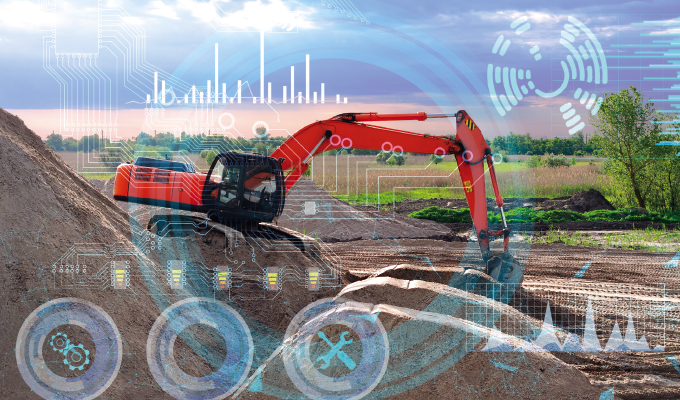The engineering and construction industry has historically placed a high emphasis on hands-on experience and expertise. As a result, the industry as a whole has been slow to adopt new technologies, lagging behind other sectors such as finance, healthcare, and hospitality. E&C companies are beginning to recognize that trying to operate complex and disjointed systems in siloed and archaic environments is hindering their ability to deliver projects on time and on budget, and many are looking to new technologies to solve these challenges.
According to a 2020 survey from PwC, 77% of E&C CEOs were already planning to implement more 4th Industrial Revolution technologies, such as drones, AI, augmented reality, Internet of Things (IoT), and robotics, even before the pandemic. For these technologies to drive and collaboration among project team members both on- and off-site, the industry must embrace intelligent construction platforms that enable the technologies to work seamlessly together, empowering creative solutions to traditional problems. The industry is heading in that direction as it embarks on a new wave of digitization, and AI has found itself front and center of this digital transformation.
BENEFITS OF AI
Construction projects generate tons of data. There is a tremendous opportunity to use this data to generate valuable insights that allow E&C businesses to improve schedules, develop more accurate estimates, and mitigate potential risks.
AI is a key component that enables firms to be able to collect, process, and analyze this vast amount of data more easily. The increased adoption of cloud computing and evolving computing capabilities have made AI much more accessible in the construction industry. AI acts as a force multiplier from investment in digital initiatives, providing additive benefits for companies that are already investing in the cloud and other technologies. Digitizing business processes often produces immediate productivity gains. The data these systems generate can help produce descriptive analytics that can aid decision making in the field. It can provide a real-time look into which tasks to prioritize, the current state of the budget, and any lags in the supply chain. AI powers predictive analytics, taking insights from historical and real-time data and applying them to current projects. This is crucial to driving continuous improvements and avoiding repeat mistakes.
AI and predictive analytics shift the focus from lag indicators to lead indicators. Rather than focus on “what has happened” or “what is happening” on projects, AI provides an opportunity to take proactive action on “what might happen?” For example, AI can be used to analyze project schedules and identify activities that are at risk of being delayed. AI can also be used to detect risks of disputes, change events or variations. This can greatly increase the potential to deliver projects ahead of time, improve profit margins, and reduce risks.
TRANSFORMING CONSTRUCTION
AI has potential to greatly enhance project team members ability to make smart decisions on projects with a decision-making solution that is rooted in historical performance, state-of-the-art machine learning, and data. AI can act like an additional team member that is constantly monitoring the project landscape for early signs of risks, such as compliance violations, health and safety issues, or added costs, and it can surface them before they become an issue.
As E&C firms continue to generate massive amounts of data on projects and implement new technologies, new intelligent technology platforms, powered by a core of AI and machine learning, can help organizations better utilize their data and convert it into the intelligent insight needed to enhance performance and create operational efficiencies, helping them succeed in the present, and learn from the past to improve the future.
IMPROVING APPROACHES
Emerging use cases of AI in the construction industry show how ripe the industry is for digital transformation. When it comes to processes and mining unstructured data photos, videos, and text and converting them to insights and intelligence, AI can do it in a fraction of the time, compared with traditional approaches. For example, Natural Language Processing can mine text data for early warning signs. Other examples include using anomaly detection to identify unexpected data points, using computer vision to track progress and act as a failsafe for issues missed by human inspectors.
AI and machine learning systems also have the ability to evolve and learn from feedback provided by the user, a huge improvement over traditional systems that require manual human interaction to update and apply new rules or logic. AI systems can self-learn and improve their algorithms, as well as re-train based on new data that becomes available, becoming more accurate and efficient over time. Users can easily see the accuracy of the system through transparent accuracy and precision scores.
CLOSING THOUGHT
AI is not only allowing the E&C to learn from the past, but also to predict the future. The list of positive use cases will only continue to grow as AI becomes more nascent in the industry.
About the Author:
Karthik Venkatasubramanian is global vice president of data strategy and development at Oracle Construction and Engineering. For more, visit www.oracle.com/industries/construction-engineering.
Modern Contractor Solutions, March 2022
Did you enjoy this article?
Subscribe to the FREE Digital Edition of Modern Contractor Solutions magazine.



